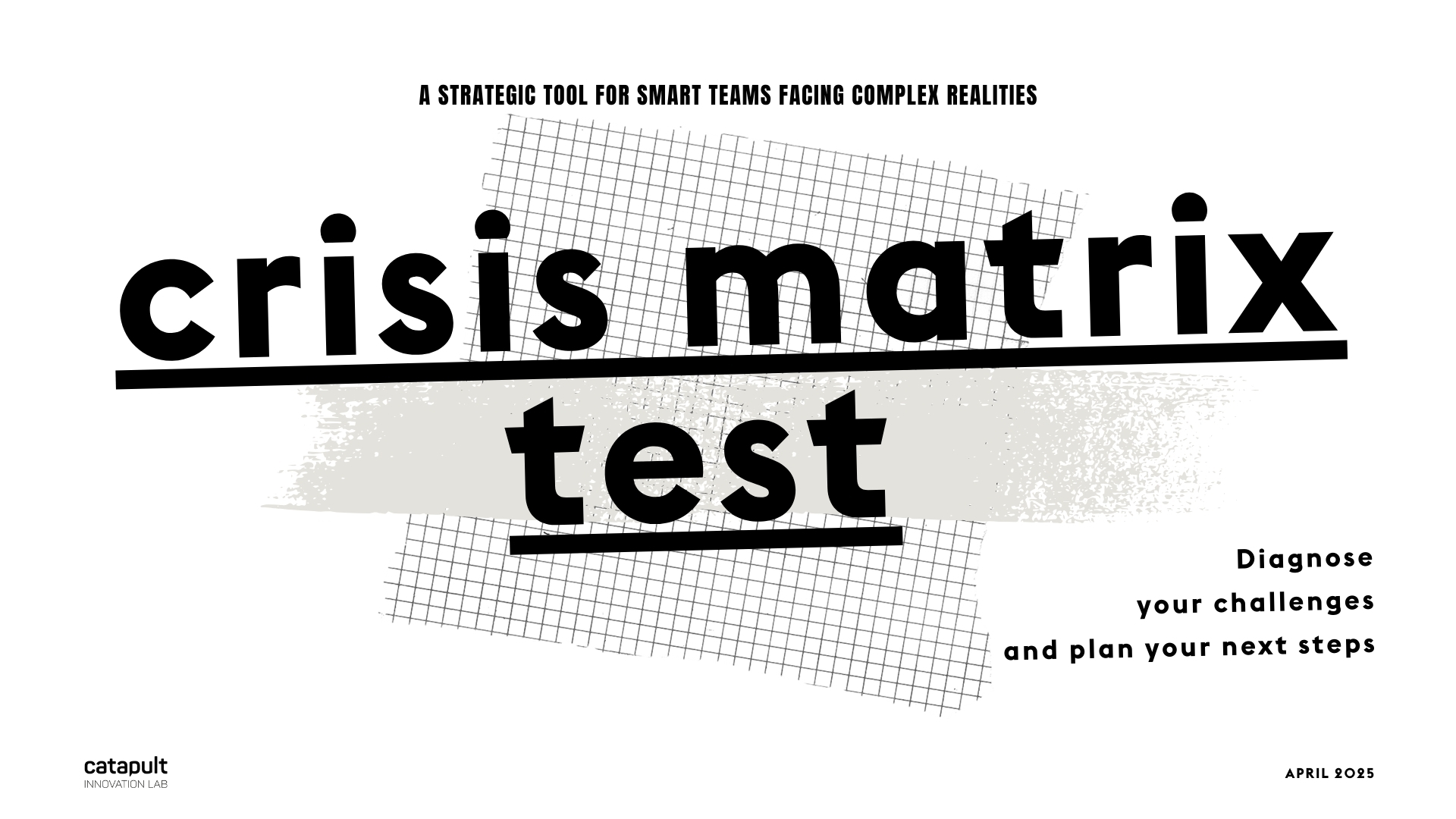In our work with teams navigating through crises, a recurring pattern emerges: it is not the complexity of the problem that hinders progress, but the way teams feel that. This is why we often turn to a deceptively simple but effective tool - the crisis matrix.
When faced with complexity, teams instinctively either freeze or revert to habitual (often unproductive) behaviours. The crisis matrix was developed to break this cycle.
Every company faces challenges, but the scale is different. The crisis matrix helps you to map and prioritize the barriers within your organisation and the co-existence of external challenges. Because not all challenges are the same - and how we perceive and prioritise them changes everything.
From reactive thinking to strategic thinking
We use the matrix in our workshops and strategy sessions to help our clients better understand, frame and respond effectively.
The crisis matrix
The crisis matrix is a strategic framing tool used to help map challenges along two key dimensions:
- Urgency: How immediate is the urge to act?
- Control: How much influence does the team or the organization have on the situation?
Grouped into four categories from real business challenges the matrix is combined with a composite dimension:
- Market
- Innovation
- Organizational
- Management
Placing the problems in the matrix helps you to clarify whether you are dealing with:
- PANIC - high urgency, low control
- PARALYSIS - low urgency, low control.
- PRODUCTIVITY - high urgency, high control
- DRIFT - low urgency, high control
Once a team completes the test, they can be assured of an "aha" moment that shows why some problems are perceived as chaotic while others quietly suck up energy in the background.
How should we use it?
It is an effective tool in strategy discussions, especially when teams feel overwhelmed.
- We map the current challenges
- We spot the patterns: are most challenges reactive? Are there unspoken tensions hiding in the drift zone?
- Tailoring the answers: we create interventions that reflect where energy and influence can realistically be applied.
This process not only clarifies but also transforms the approach - moving teams from reactive loops to strategic planning.
Why does it work?
This matrix draws from behavioural decision science and systems thinking: it gives form to the often vague experience of organisational tensions. It also creates a common language for talking about difficult issues without blame - helping teams understand that -why do they react in the way they do under pressure and how it would make sense to turn to solution building.
For the catapult lab team, it's more than just a tool. It is a a framework to which we return in the course of our projects -because it effectively helps us to see not only what is urgent, but also what is the best possible course of action.

Download the crisis matrix worksheet here and feel free to use it!